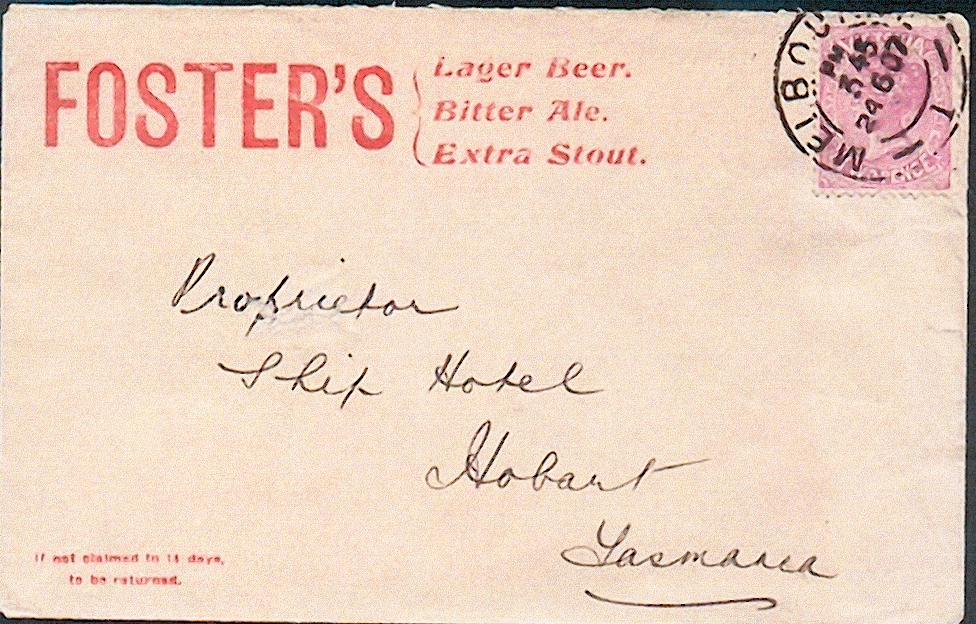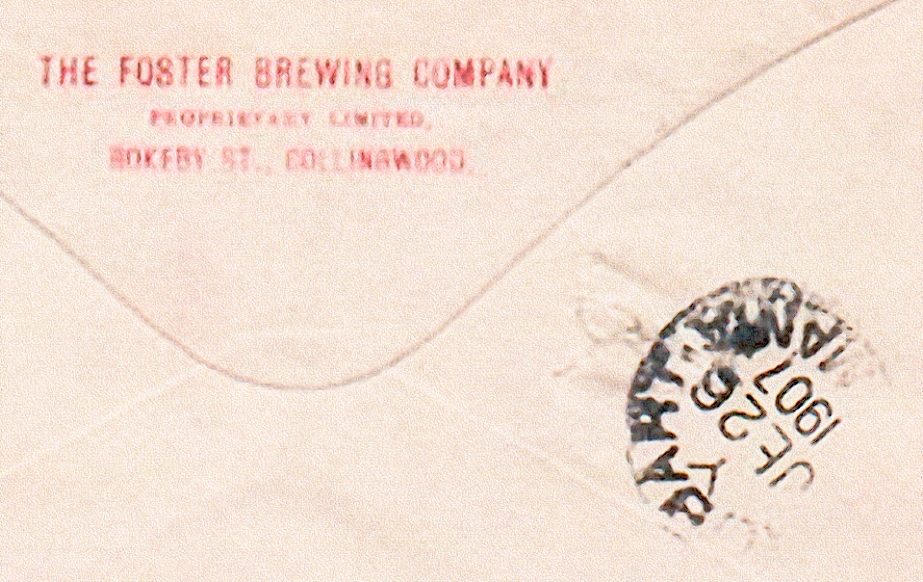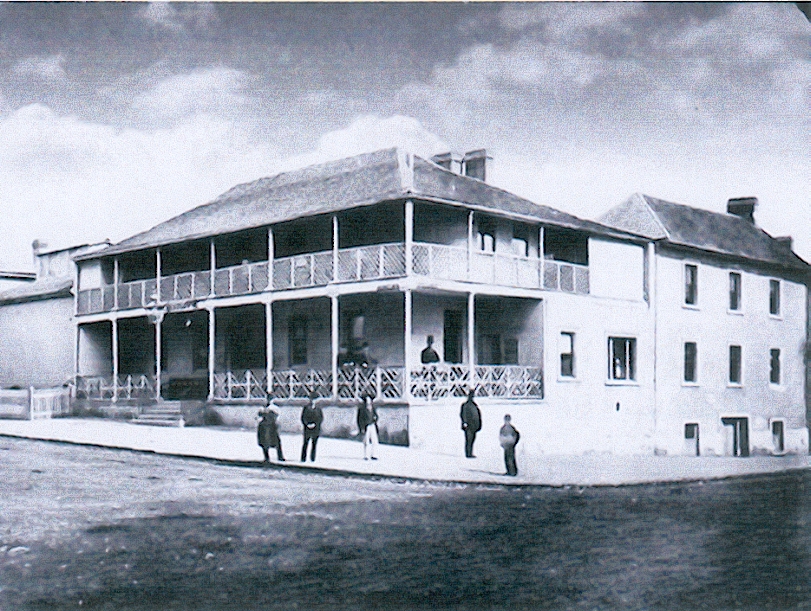The advertising cover proudly proclaims three types of Foster’s beer and the pink ‘ONE PENNY’ QV stamp of Victoria is canceled MELBOURNE/ PM/ 3 45/ 24 6 07/ -1-. It is addressed to Proprietor, Ship Hotel, Hobart, Tasmania (Figure 1).

On the flap of the reverse there is a red printed The Foster Brewing Company, Proprietary Limited, Rokeby St., Collingwood and there is an arrival postmark of HOBART/ Y/ JE 26/ 1907/ TASMANIA (Figure 2).

In 1886 two brothers, William M. and Ralph R. Foster, stepped off the boat in Melbourne from New York City to make their fortune brewing a new kind of beer for the colonies. They brought the most advanced brewing equipment available and the world’s best brewing expertise in a German-American brewer, a Mr. Sieber and a New York refrigeration engineer, Frank A. Rider. The brothers paid almost every penny they had, £48,000, to build Melbourne’s most modern brewery.
The new brewery was designed to brew Australia’s first bottom-fermented lager, a crisp, refreshing beer style more suited to the country’s climate than the traditional warm English ales. Lager must be brewed and stored at very low temperatures so central to the high-tech brewery (by 1880’s standards) was a huge 60-horsepower steam engine powering an ice-making machine and a freezing apparatus with a 25-ton capacity that pumped cold brine through 6 miles of pipes to cool the cellars and fermenting room. Foster’s Lager was stored for 60 days at 35 degrees Fahrenheit – most other beers of the day suffered barely a week at 60 degrees. The first Foster’s Lager prototype was brewed in November 1888 and bottled in the classic heavy bottle of the day with a wired-down cork. Another Foster’s Lager characteristic was that it was brewed with domestic cane sugar, as an adjunct to malt.
Foster’s was launched in the hottest months of the year and the Foster Lager Brewing Company took great pains to ensure it was delivered in optimum condition. Every Foster’s stockist was issued with a free daily supply of ice, a not inconsiderable logistical exercise for the time. Just as the brand was beginning to establish itself, for some inexplicable reason the Fosters sold the company to a Melbourne syndicate and returned to the US. The local syndicate’s new directors were Messrs Hart, Thomas and Turner and the company was registered in Victoria on November 13, 1889.
In the previous year, Melbourne hosted a Centennial Exhibition and Foster’s Lager won first prize in the Exhibition’s International Brewing Award against all comers. The award-winning style became the blue-print for Australian brewing and German brewers in Melbourne were even prosecuted for trying to pass their beer off as Foster’s by swapping the bottle labels.
In 1899 Australian soldiers answered the British Empire’s call and troops left for the Boer War in South Africa followed by a shipment of sustaining amber liquid, the very first export of Foster’s Lager. By 1907 the only war Foster’s was involved in was the battle for market share with the plethora of other small breweries in and around Melbourne. The companies decided to join forces and Carlton & United Breweries Proprietary Limited (CUB) was formed. By 1910-11 Foster’s Lager sales had increased by an astounding 83.8 per cent and the brand never looked back. In 1958 Foster’s adopted the modern and highly transportable packaging of steel cans.
Even to this day the name of Foster’s beer is well advertised and consumed, even though their American founders, William and Ralph Foster left Australia more than a century ago. A picture of the Ship Hotel, Hobart Town, in the period of 1870-80 is seen in Figure 3.
